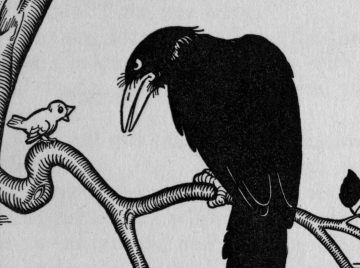Priscilla Wald in Public Books:
 Bird omens once warned the ancients of the future. In Greece and Rome, for example, avian augury involved seers trained in the art of reading the flight of birds, who sought to make sense of a chaotic world through decoding messages from the gods. Since bird omens—or “auspices,” Latin for this kind of divination—often warned of disaster, ignoring or misreading them could be catastrophic. Ancient audiences watched tragedy unfold when hubristic rulers disregarded their augurs’ reading of these omens. (The two eagles that violently destroy a pregnant hare at the beginning of Aeschylus’s play Agamemnon, for example, forecast a Greek victory but prompt Agamemnon’s sacrifice of his daughter Iphigenia, leading, in turn, to his murder at the hands of his wife, Clytemnestra.) The legacy of bird divination is etymologically evident in such words as augury, inauguration, and auspicious (from the Latin augur and auspex). Birds, it seems, continue to point to the future.
Bird omens once warned the ancients of the future. In Greece and Rome, for example, avian augury involved seers trained in the art of reading the flight of birds, who sought to make sense of a chaotic world through decoding messages from the gods. Since bird omens—or “auspices,” Latin for this kind of divination—often warned of disaster, ignoring or misreading them could be catastrophic. Ancient audiences watched tragedy unfold when hubristic rulers disregarded their augurs’ reading of these omens. (The two eagles that violently destroy a pregnant hare at the beginning of Aeschylus’s play Agamemnon, for example, forecast a Greek victory but prompt Agamemnon’s sacrifice of his daughter Iphigenia, leading, in turn, to his murder at the hands of his wife, Clytemnestra.) The legacy of bird divination is etymologically evident in such words as augury, inauguration, and auspicious (from the Latin augur and auspex). Birds, it seems, continue to point to the future.
Bird omens of a sort are the subject of two recent anthropological studies of avian flu preparedness in Asia. Both Natalie Porter, in Viral Economies, and Frédéric Keck, in Avian Reservoirs, convey the ominousness suffusing poultry farming, using birds as predictors.
More here.
